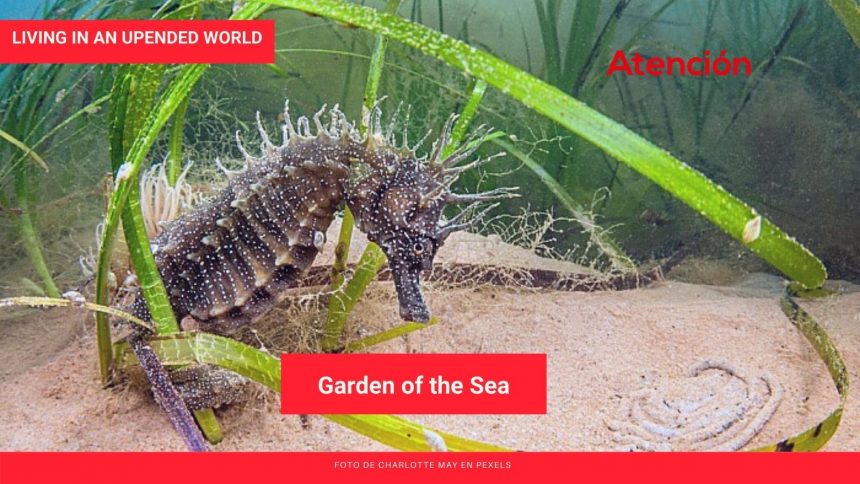By Natalie Taylor
Human ingenuity is amazing–not only will it bring us out of the pandemic, it can also offer hope to save the planet for future generations. Often clues to a potential gift to humanity are right under our noses, it just takes a special someone to find it.
Angel Leon remembers swimming as a youngster among the eelgrass in the Bay of Cadiz when he was growing up. Now a notable Spanish chef with a 3-Star Michelin-rated restaurant he noticed that the slender blades of the eelgrass—Zostera marina—contained tiny grains clinging to the base. His culinary interests led to the next question: could this marine grain be edible?
This was not a first for Leon. A trailblazing chef, he has brought to the table formerly unrecognized and unused marine plants and animals. This marine grain looks very much like rice, and lab tests showed it’s gluten-free, high in omega-6 and 9 fatty acids, with 50 percent more protein than rice per grain. The best part—it grows naturally in coastal seawaters and needs no fertilizer. He further found out that this had been an important part of the diet of indigenous people living on the Gulf of California in Sonora, Mexico. More fascinating yet it is the only known case of a grain from the sea being used as a human food source. Leon, working with a team from the University of Cadiz, launched a growing area across the salt marshes into what he calls a “marine garden.” They watched as the plants expanded and improved the ecosystems: the salt marshes once again teemed with life, from seahorses to scallops.
But what about the taste? Leon put the grain through a battery of recipes, grinding it to make flour for bread and pasta and steeping it in flavors to mimic Spain’s classic rice dishes. He found that with the husk it tasted similar to brown rice with a “hint of the sea at the end.” It took about two minutes longer to cook than regular rice but absorbed flavors very well.
The plant’s benefits go beyond cooking. It absorbs carbon 35 times faster than tropical rainforests; taking in 10 percent of the ocean’s carbon annually despite covering just 0.2 percent of the seabed. Seagrass has been used as insulation for houses, as roofing material, and even for packing seafood but never cultivated as food. Wild seagrass meadows have been dying off at an alarming rate in recent decades mostly due to negative human interference. Leon’s first marine garden suggests potential harvests could be about 3.5 tons per hectare. The yield is about a third of what one could achieve with rice but is balanced by the low-cost and environmentally friendly cultivation. It’s a wonderous gift from nature that provides 3,500 kilos of food without fertilizers or antibiotics—just seawater and movement. Leon envisions a global reach for his project paving the way to harness the plant’s potential to boost aquatic ecosystems, feed populations, and fight the climate crisis.

